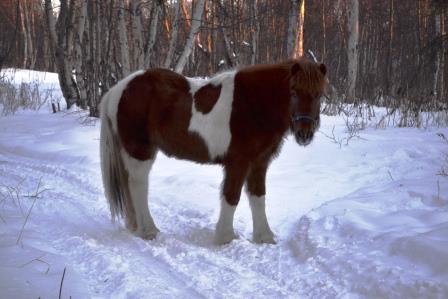
Home > Dispatches > Daily Dispatches 2018 >Daily Dispatch #37
February 6, 2018: All Creatures Docile and Indifferent
My day started learning more veterinary-related things, and ended with the same. Had Vet assisting class this morning with Dr. Brooke Wilson. We (there are now 14 in the class, down from 16) first learned how to cast a pregnant cow, using ropes. Apparently, cows have a better time of it in giving birth if they are on the ground. The You Tube video was of a cow being cast in an indoor setting. I wondered if it would go this well out on the range. We also learned about signalment (breed, age, sex) and the particulars of doing physical exams. With horses, there are specialty exams for colic and lameness. Always, there are a lot of questions involved when doing an exam. |
|
|
Hrimmi stood quietly, noodling a bit, under the bright light of Dr. Kaiser’s mobile van. And he let her feel around in her mouth and hold her tongue while he examined the sore area. She didn’t need to be sedated. It is as though she was born sedated. I had been taking her temperature regularly – I was able to tell Dr. Kaiser that her average is 99.9° F – when he checked it, it was 101° F. And fortunately, her heart-rate (when he checked it) was 40 bpm, which is what it usually is. Pete and I hung out in Dr. Kaiser’s mobile van and talked after Pete put Hrimmi away. I asked Dr. Kaiser how he goes about doing physical exams. He said that he does his examinations in a routine fashion, making sure to do his checks and not leaving anything out. This way, he said, he is better able to determine what the problem is. As I understood it, sometimes the animal owner will think that they know what the problem is but are wrong. The veterinarian considers the big picture, and in this way determines what the underlying cause might be. For example, Dr. Kaiser was told earlier that a horse he was examining had a sheath problem. He did a complete physical, and after, he deduced that the horse had congestive heart failure. He said (among other things) that the heart sounded like a sneaker bouncing around in a washing machine. I have up until now been checking the horses’ temperature, pulse, and respiration. But I am going to have Dr. Wilson come out in the spring and assist me in coming up with a chart, so that twice a month, I can do a more thorough assessment. I am never going to be a large animal veterinarian. I am never going to be a large animal veterinarian technician. What would really put me over the edge would be having to figure out dosages. But I am capable of learning the basics, and use these basics when dealing with my own animals. There is some self-satisfaction in knowing this. |
|
